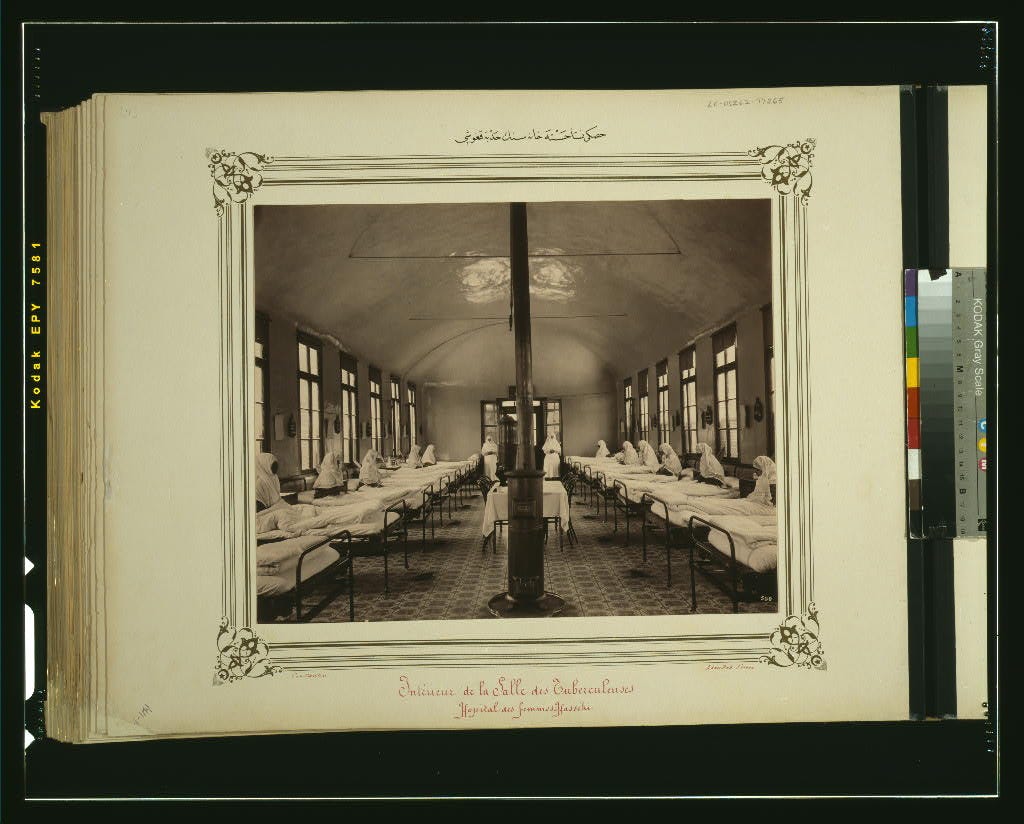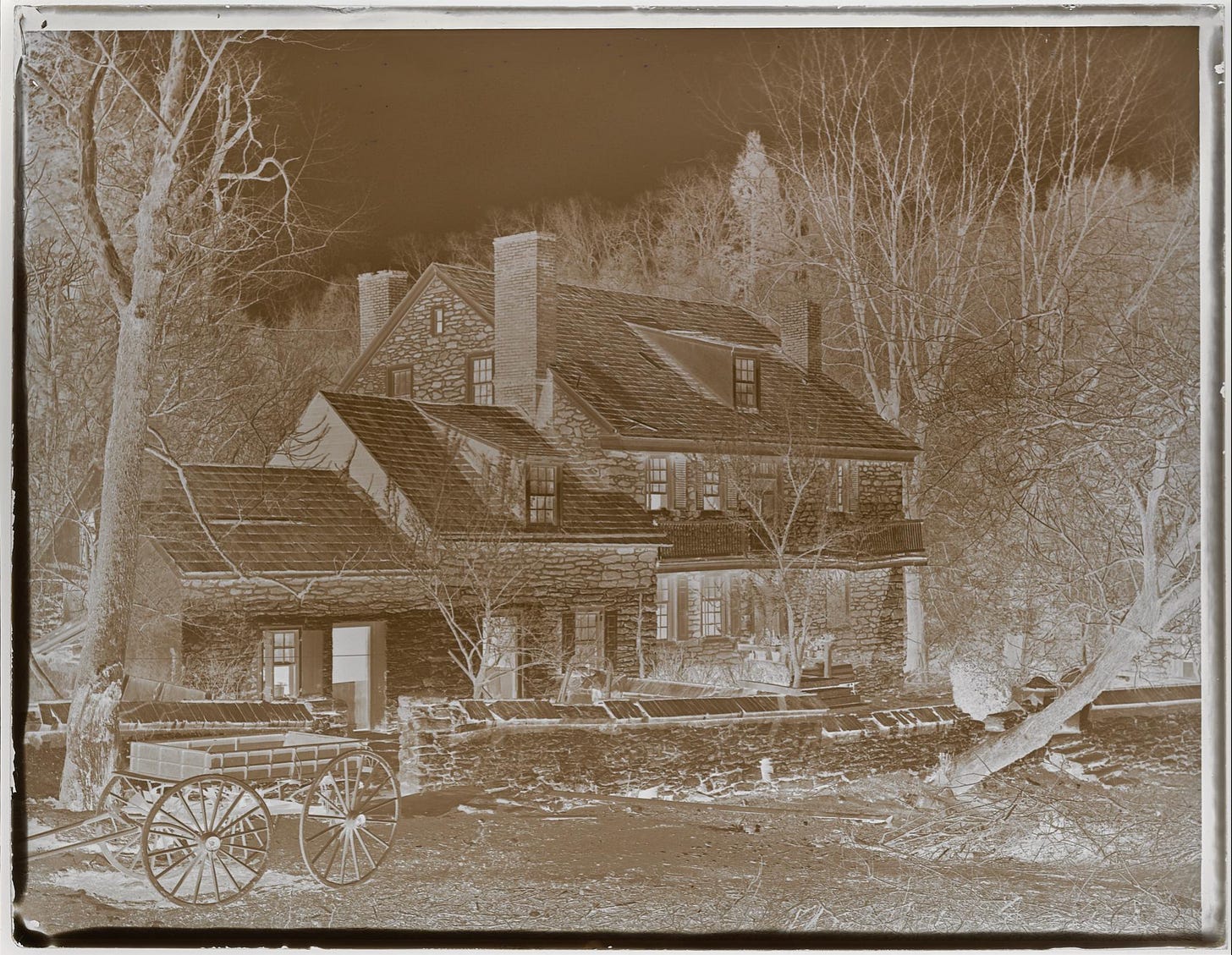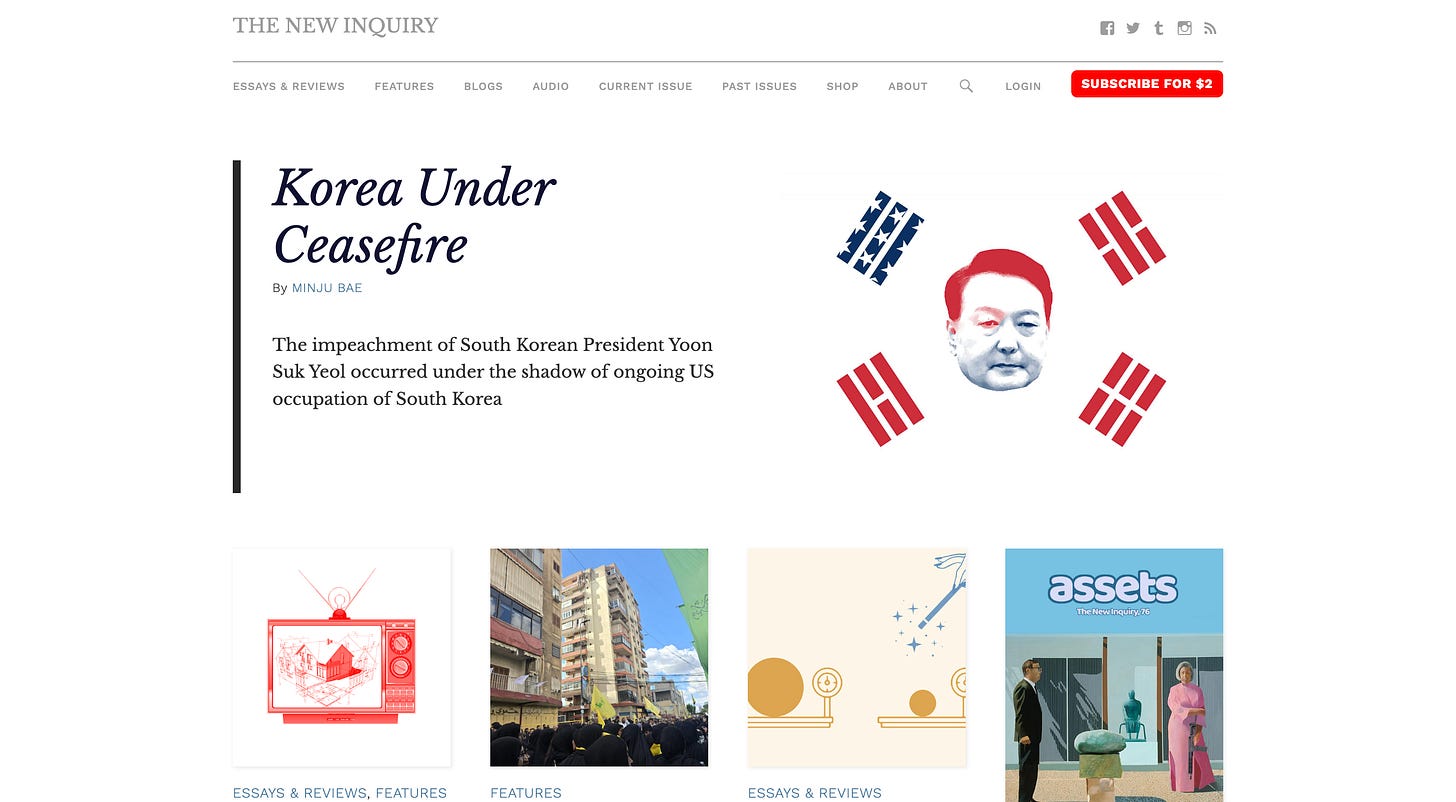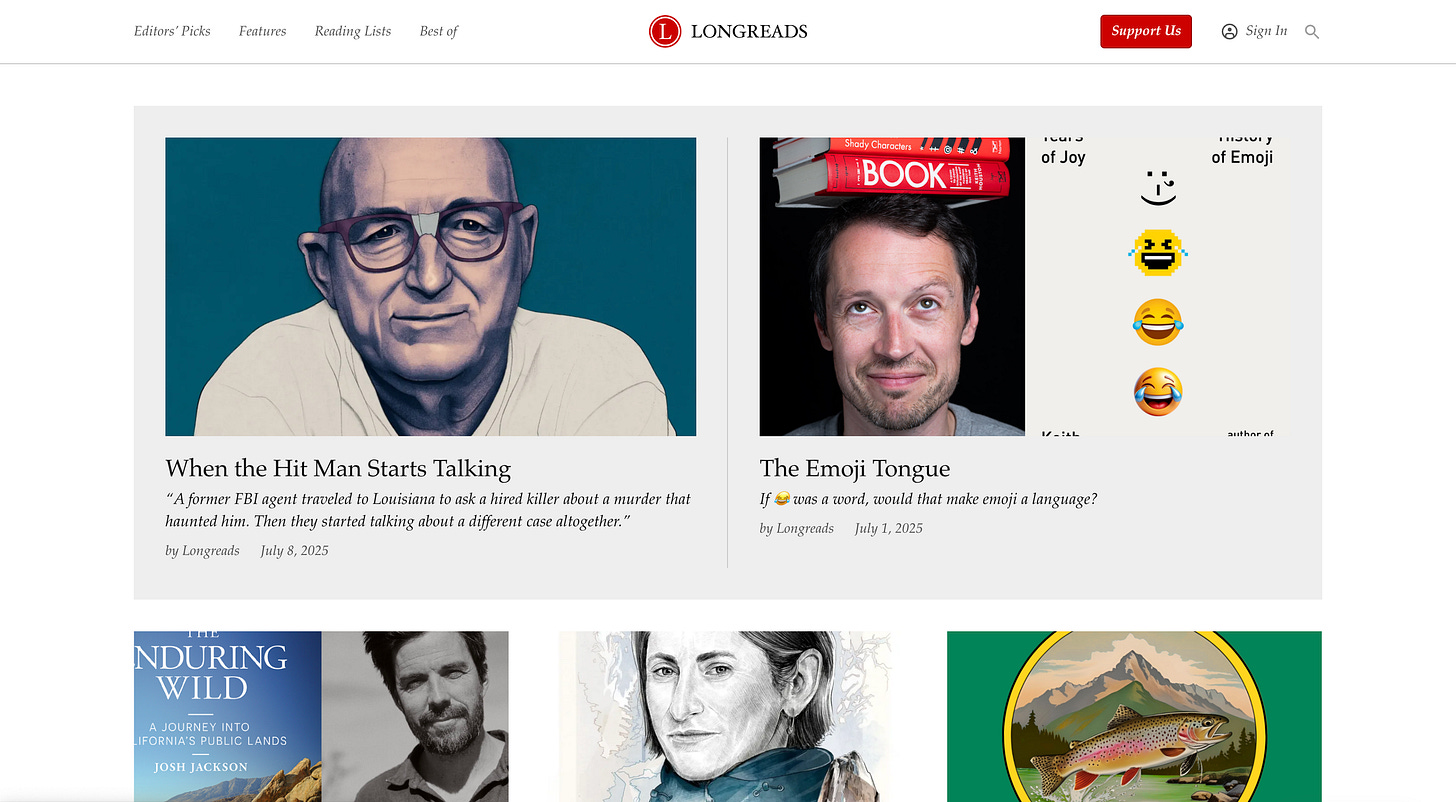How to write a smart internet essay
because good taste and genuine curiosity can't be generated by AI
One of the most important things I’ve learned as a writer is that not everything needs to have a hot take. Just because everyone’s posting about something doesn’t mean it’s actually worth writing about. And if you have to force it, it ultimately feels hollow.
But that’s not you should approach cultural essays. When you sit down to write, it should be to figure something out. “What underlying issues is this perpetuating?” or “Why are people gravitating towards this in our current social or political time?” Why this object, this trend, this behavior, this interest, right now?
I wanted to share my approach to this kind of writing. Where I find inspiration, how I shape that initial interest into a full-fledged argument, and where I go to find evidence to ground it. This isn’t a rigid formula, but more of a loose structure that helps me turn simple curiosity into something worth saying.
Where to get ideas from
Arguably the hardest part of writing anything is finding something to write about. Sometimes I’ll go weeks where absolutely nothing seems interesting enough to expand on. Or it seems like everything has been said a thousand times already.
Most of my inspiration comes from just being online. From the media I consume, trends I notice, celebrities who have been especially controversial recently. Twitter is always a good place to start, especially for niche discourse that hasn’t hit mainstream conversation yet. Though I don’t use Tiktok right now, it’s still one of the best places to see what issues younger people are focusing on. I also pay attention to YouTube video essays to see what topics creators seems to be circling a lot. The same goes for the movies and TV shows people are watching. They can reveal a lot about our society and culture at the time of their popularity.
And sometimes, it helps just to read other people’s writing. Even older or archived websites can be great sources of inspiration. Here are a few I keep bookmarked to reference back to:
The Baffler—sharp and politically grounded essays that explore left-wing ideas, cultural analysis, short stories, poems, and art. I like to use these as reference on how to effectively balance cultural analysis with systemic critique.
The Drift—a contemporary, youth-driven site for essays, fiction, poetry, interviews, etc. that are serious without being overly academic. I would say their tone is set somewhere between Substack and literary journals, so it can be a useful reference for what ambitious internet writing can look like.
Lux Magazine—a socialist feminist magazine that explores the intersection of identity and politics, from abortion networks to 911 alternatives. It’s an amazing (and visually beautiful) place to find cultural critiques tied in material conditions.
Real Life—a magazine about living with technology, with an emphasis on living. Though it’s now archived, it is still an incredibly rich source of esssays that connect technology to identity. I think archived sites are amazing places to see what opinions on certain topics used to be and how they’ve since changed.
Momus—a platform for non-stuffy writing on art, criticism, and art criticism. The conversations move beyond simply focusing on exhibitions and explore broader social and aesthetic questions. It’s a great place to explore using art as an entry point for thinking about culture more widely.
The New Inquiry—radical exploratory pieces that prioritize ideas over accessibility. It’s an amazing place to get inspiration for your own writing if your focused more on contradiction and discomfort rather than simple resolutions.
LongReads—a site dedicated to finding the best longform posts from essays, to reading lists, to interviews across the internet. I think it’s especially useful for keeping track of larger trends in what people are writing about, especially outside the typical Substack or legacy media circles.
From idea to thesis
Once I have a topic, I have to figure out what I actually want to say about it. I don’t want to just circle around why it’s interesting, but what it means about our world and the people in it. A “deep dive” has to reveal something that the reader may never have considered before.
This is when you need to start zooming out. Take whatever main point that caught your eye and try to figure out a larger pattern or contradiction within it. I usually ask myself—
☐ Is this part of a bigger trend or shift?
☐ Have versions of this conversation been had before in a different time or context? And can I use those other versions as reference for my own angle?
☐ Does this contradict something else we believe or support currently?
☐ What does this reveal about power, desire, performance, gender, status, systems, etc.?
If I feel like I can’t explain the piece without answering these questions, then it usually falls apart. You don’t just need a hot take, but something that connects the object or behavior to the broader ideological world we live in.
—But what if it’s already been said?
This happens constantly. I find an idea I’m excited about, start doing research, and realize that the conversation’s already been had. Someone’s probably written about it for The Atlantic. Or there’s a 45 minute video essay on it with half a million views. But I’ve learned not to let this stop me.
The reality is that most ideas have already been written about in some form. So it’s not a good enough reason to abandon those ideas. What matters more is how you are looking at it and why it sparked your attention right now. The timing and context of your ideas are more important than how “basic” the general topic is. If your angle is grounded in something specific—like your unique opinion or cultural references that haven’t been tied to the topic before—then it won’t feel redundant.
Also, writing for Substack is not the same as writing for Wikipedia. Most readers aren’t looking for just a list of facts or objective data. Your reading is worth it because you include your emotions and subjectivity into conversations.
People aren’t coming to you because you’re the only person writing about that topic, but specifically because of how you’re doing it.
Where I go for proof and patterns
Once I feel like I have a solid angle to work with, I start looking for more support for it. This isn’t just for simple proof, but to give the piece depth and texture. And this also doesn’t simply mean overly academic sources or hard data (though those are definitely useful too). I look for evidence in a broader sense, for patterns that show that this thing I’m writing about isn’t random, but part of something larger.
A lot of the same tools I use for inspiration can be useful for finding proof as well. Youtube video essays, TikToks, or articles that cover similar topics can be great for finding evidence. It’s not that I’m trying to sound fully definitive, but simply trying to build a case for why this might be true.
These are some of the sites I like to explore for proof or evidence:
The Pudding—one of my absolute favorite places to just explore and get lost in. The formatting and concepts are so unique, and every piece just feels like an essay prompt waiting to be written. Even if I’m not writing about the same subject, just seeing how they approach data and visual arguments is so intriguing.
Internet Archive—the absolute holy grail for finding old magazine scans, video clips, and other media that’s otherwise disappeared from the rest of the Internet. It’s such a great resource to find historical context for the topic you’re exploring.
Wayback Machine—a time capsule that lets you revisit how websites used to look. It’s so useful when you want to track down old articles or find out how a subject was framed the last time it was a hot topic.
TV Tropes—an underrated catalog of tropes across film, TV, games, and other media. It’s great for finding recurring cultural narratives or putting a name to dynamics you might have noticed but couldn’t explain. I love just clicking through their “Random Trope” and “Random Media” buttons when I need some inspiration too.
The Public Domain Review—a curated archive of historical texts and visuals for art, literature, and ideas. It’s perfect for finding strange and beautiful curiosities to inspire unexpected angles in your writing.
Monoskop—a dense but extremely rewarding “wiki” for arts and studies in topics ranging from techno-feminism to shadow libraries. There is so much amazing content here, you just really have to explore and get lost in the rabbit holes.
e-flux—another dense but extremely valuable platform for critical discourse on art, film, architecture, technology, theory, and more. Many of the essays are helpful when you’re trying to write something slower and more structured, grounded in the intersection of aesthetics and the real world.
The visuals matter
I rely on visuals a lot in most of my essays. A single well-placed image can do a lot of heavy lifting for your angle. Sometimes it provides context, sometimes evidence. Either way, it adds texture.
I like to include screenshots of tweets or TikToks where people are discussing the topic I’m writing about. It’s a great way to show how mainstream conversation is framing the issue.
And, more practically, visuals break up your text. If your reader has been scrolling through long pieces of text and are suddenly hit with a well-timed collage or photo, it can maintain their interest and slow them down. It helps keep the post feeling alive and layered, rather than just being walls of paragraphs.
For my collages, I like to use Canva. They offer 30-day free trials, but even after that, the free version is still really functional. The only thing I really use the free trial for is removing the background of images, but there are other ways to remove them by using other sites.
For my other photos, I use publicly available image archive sites online. There are so many options out there, so don’t use AI to generate images for you!
Here are some of the ones I like to use that will give you a good place to start:





George Eastman Museum Collections—

But it’s important to not overuse them! A random image that doesn’t connect to your point and is just included to have something there can flatten the writing and confuse readers. You need to ensure that the image can add something your words can’t, that it can deepen the points you’re trying to make.
If you’ve enjoyed this, consider buying me a coffee to support my writing.
I don’t follow any of this like a struct formula, but having a loose structure makes the overall process feel less daunting. Knowing where I’m going to look for trusted sources or where I’m going to find the images for my collage makes everything flow more easily.
I don’t think you need to have the smartest or most original take in the room. You just need to be genuinely curious and willing to expand that curiosity into something more important. Writing that feel like it’s trying too hard to be “right” feels boring. The point of an essay isn’t to be as morally correct as possible or to align perfectly with what everyone already believes. To me, the best writing should explore something uncomfortable, it should subvert an idea that other people are already comfortable believing.
There’s a difference between a writer being genuinely curious and someone just trying to be performative in their criticism. And your readers can see the difference.

















So glad to have found this. I’m new to Substack writing and have found myself mostly writing my “takes” on things without much depth. Really looking forward to looking through these resources!!
so so many useful resources, thank you so much!